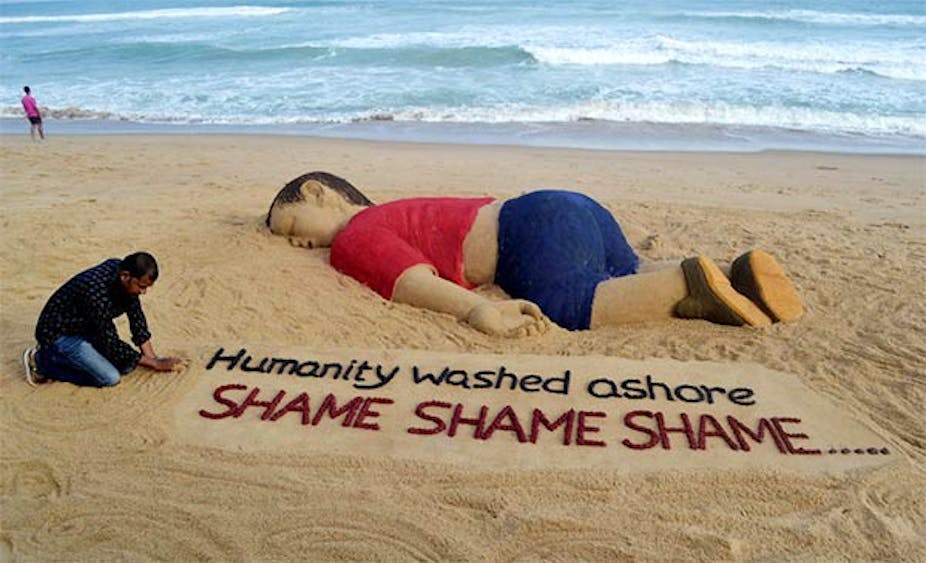For many of us the image of the little Syrian boy lying face down on a beach evoked almost unbearable pathos. Even the media, so used to revelling in misery and gore while affecting a tone of gravitas, seemed shocked. Journalists and newsreaders too could not help but think of their own child or grandchild lying there.
It takes an act of resolve to make oneself look unflinchingly at the picture of the lifeless three-year old, Aylan, his face still in the water, without finding some way to falsify the sheer tragedy of it.
Some immediately sought to turn disempowering pathos into manageable self-righteousness by finding someone to blame. Certain politicians congratulated themselves because “it could not happen here”. Other people tried to find holes in the father’s story as if framing the fact of Aylan’s drowning differently could wipe away the anguish.
These strategies seem to make those who resort to them feel better; yet none can change the one incontrovertible fact. Whatever the circumstances, and no matter who may have been to blame, the little boy was entirely innocent. Yet he suffered the terror of drowning before his body drifted alone across the seas, washing up on a foreign shore.
Feeling helpless and seeking to assuage the pain, many simply shifted their attention to something else. Who has not done that? Others decided to act by donating money or pressuring their governments to take more refugees. If they could do nothing for Aylan they could at least try to prevent it happening again.
Yet we are left with the most troubling question: How do we account for a tragedy like this, with all of its primal sadness, within our understanding of the world? How do we reconcile ourselves to it?
I am speaking not of how we understand the conflict in the Middle East nor of our attitudes towards those fleeing danger, but of how we explain arbitrary suffering within our conception of the human condition.
Is the world a vale of tears? Is Aylan a victim of ‘divine sadism’? Or is the world a benevolent place even if it is marked at times by inexplicable tragedy and random suffering?
For some the world always has been and always will be one of conflict and sorrow, so that the do-gooders will never be able to resist the tide of tragedy. For such cynics there is nothing to do except protect one’s own position.
This kind of cynicism may be a psychological defence to suppress the upwelling of a compassion with nowhere to go, but for some it is a genuinely held view of life and the world. Evil is simply part of the natural order, of the human condition, and it is pointless to agonize over its origins and meaning.
And yet we come back to the image of a little boy lying dead on the sand. One need not be a cynic to come to the view that there is no ultimate answer to the question of why he died. It is simply a fact, there in front of us, with its awful melancholy, a picture to remind us – the privileged – of the fragility and vulnerability of human life.

